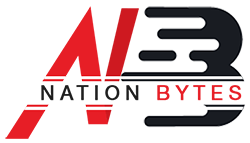How To Write An Impressive Resume in 2025?
A well-written resume is critical as it portrays who you are to the employer. This is the first impression; it needs to be good.

1. Collect all your professional information
Gather your professional background and list everything in a master resume. This process might sound tedious, but it’ll make the actual resume writing process smoother because you’ll have all the details.
Information to gather before writing your resume:
-
Past and present jobs: Including start and end dates, name of employer, location, job title, and a list of basic responsibilities.
-
Notable achievements: These could be from your academic career or professional life. Make sure to quantify your achievements on your resume using hard numbers or data where possible.
-
Hard and soft skills: Think of any skill that might help you excel in the workplace, from data analytics to public speaking.
-
Education history: Jot down your graduation date, school name, location, honors, and any notable coursework.
-
Volunteer work or extracurriculars: This could include formal or informal positions. List the name of the organization, when you were involved, and your basic duties.
-
Certifications: list the awarding body, when you were certified, and the official certification title.
-
Awards & honors: if you’ve ever received an award, list the awarding body, title of the award, when you received it, and provide a brief explanation for why you were awarded
.
Once you’ve got all your professional information listed in one place, it’s time to start creating your resume.
2. List your contact information at the top
Start by listing your name and contact information in your resume’s header.
Use a larger font (20pt or larger) for your first and last name to make it stand out to the reader.
Contact information to include in your header
-
First and last name
-
Email address (use a professional one like firstname.lastname@gmail.com)
-
Phone number
Optional information
-
Online portfolio or website (if relevant to the job)
-
LinkedIn URL
-
City and State to show you’re in the area
3. Write a convincing resume summary
Writing a summary of your experience and skills at the top of your resume is an effective way to grab the attention of employers.
A professional resume summary provides a snapshot of your primary qualifications by emphasizing your most impressive achievements and skills in 2-to 3 sentences. If you want to quickly make your own or generate then you can generate it from ChatGPT too.
4. List your work experience
Your resume’s work experience section is what employers look at to immediately see if you’re qualified. Take your time making this section clear and full of achievements to give your application the best shot at landing your interviews.
To start, list your current or most recent job at the top of this section, and older jobs below (from newest to oldest).
How to structure work experience on your resume
Job title: Dates employed (year and month)
Company name: Company location (city and state)
-
Three to five bullet points describing your achievements and responsibilities
-
Include hard numbers in your bullet points when possible
-
Start each bullet point with an action verb
Use present tense when describing current responsibilities, and past tense when discussing previous roles or completed projects.
5. Highlight your most relevant skills
If you have skills that are directly relevant to the job you want, list them in your resume’s skills section.
There are two types of skills to put on your resume hard skills and soft skills. Hard skills are learned through training, workshops, work experience, and school (like math, Spanish, and CPR).
Soft skills are developed throughout your life. Organizational skills like time management and punctuality are examples of soft skills employers value.
6. List your highest degree & education details
If you have any relevant work experience, place your education section near the bottom of your resume.
But if you’re a recent graduate, have minimal work experience, or your degree is highly related to your job, move your education section toward the top of your resume. This provides space to describe awards and academic achievements, and to outline coursework and projects.
How much detail you include in your resume’s education section depends on the work experience you have.
7. Add certifications and other relevant sections
Depending on your experience and background, you might want to add some additional sections to your resume highlighting other, more specific qualifications.
For example, the most common addition people make to their resume is a certifications section.
If you’re applying for jobs that require specific certifications to get hired, include a section on your resume that highlights those certifications.
If you work in education, medicine, or construction, you likely have more than one professional certification. In these fields, you should add a certifications section to your resume to clearly show employers that you’re qualified.
Other optional sections to put on your resume
Aside from certifications, there are many other sections you can add to your resume if they make sense for the job you’re targeting, including:
-
Hobbies and interests
-
Extracurricular activities
-
Awards
-
Publications
-
Language skills
-
Personal projects
Spend some time reading through your resume at least a couple of times before you send it off. You’d be surprised how easy it is to make a typo and how hard it is to spot them in your writing.
8. Save your resume as a PDF (or Docx)
If the job description doesn’t specify, save your resume as a PDF because it saves your formatting even if you use fonts that aren’t installed on the hiring manager’s computer.
Your resume’s file name should be simple and clear to make it easy for the hiring manager to find it later. For example, Sana Resume.pdf is a good file name because it contains the applicant’s name and the word “resume.”
- Keep some points in mind while writing your resume

 adminsk
adminsk